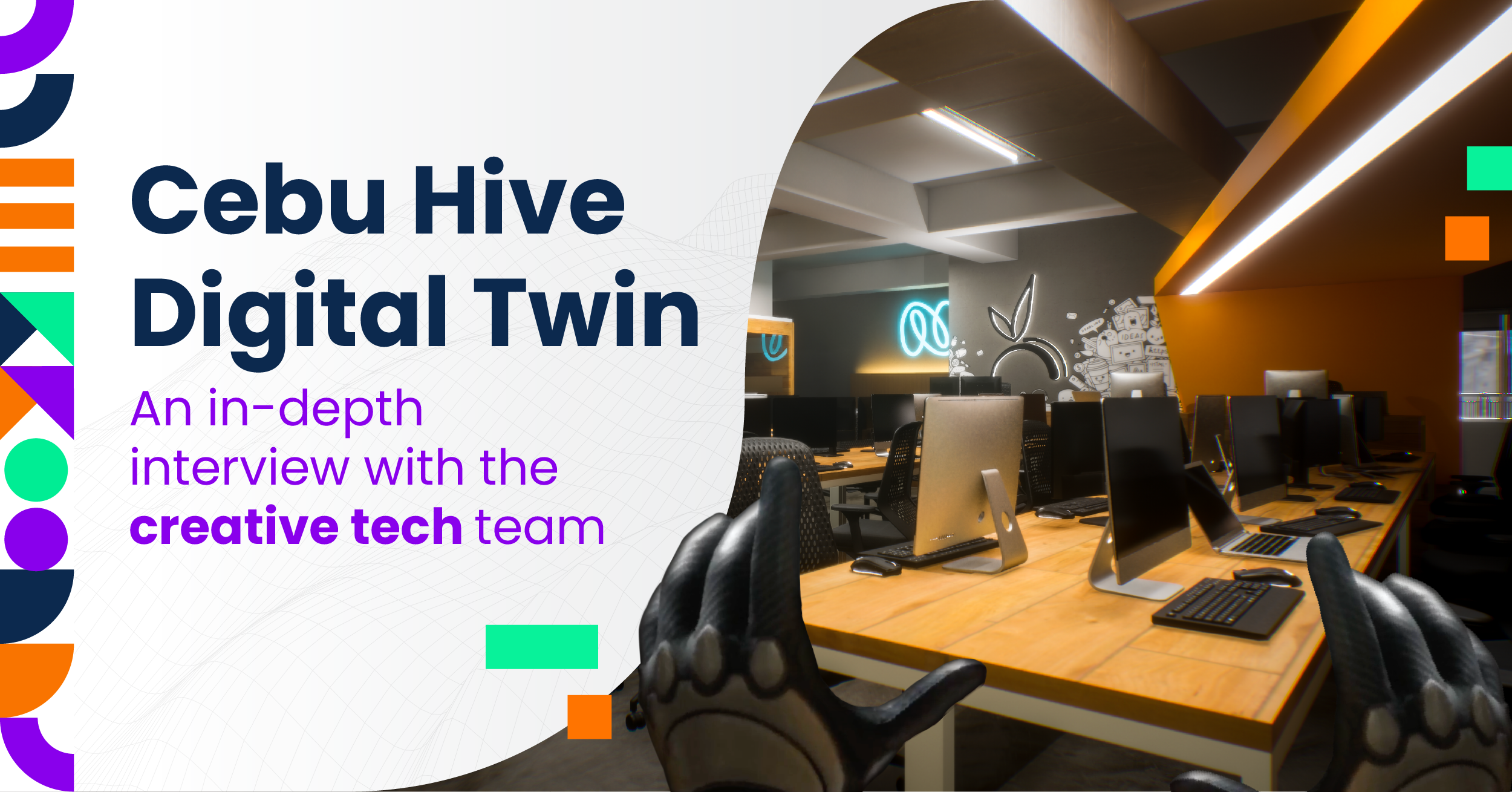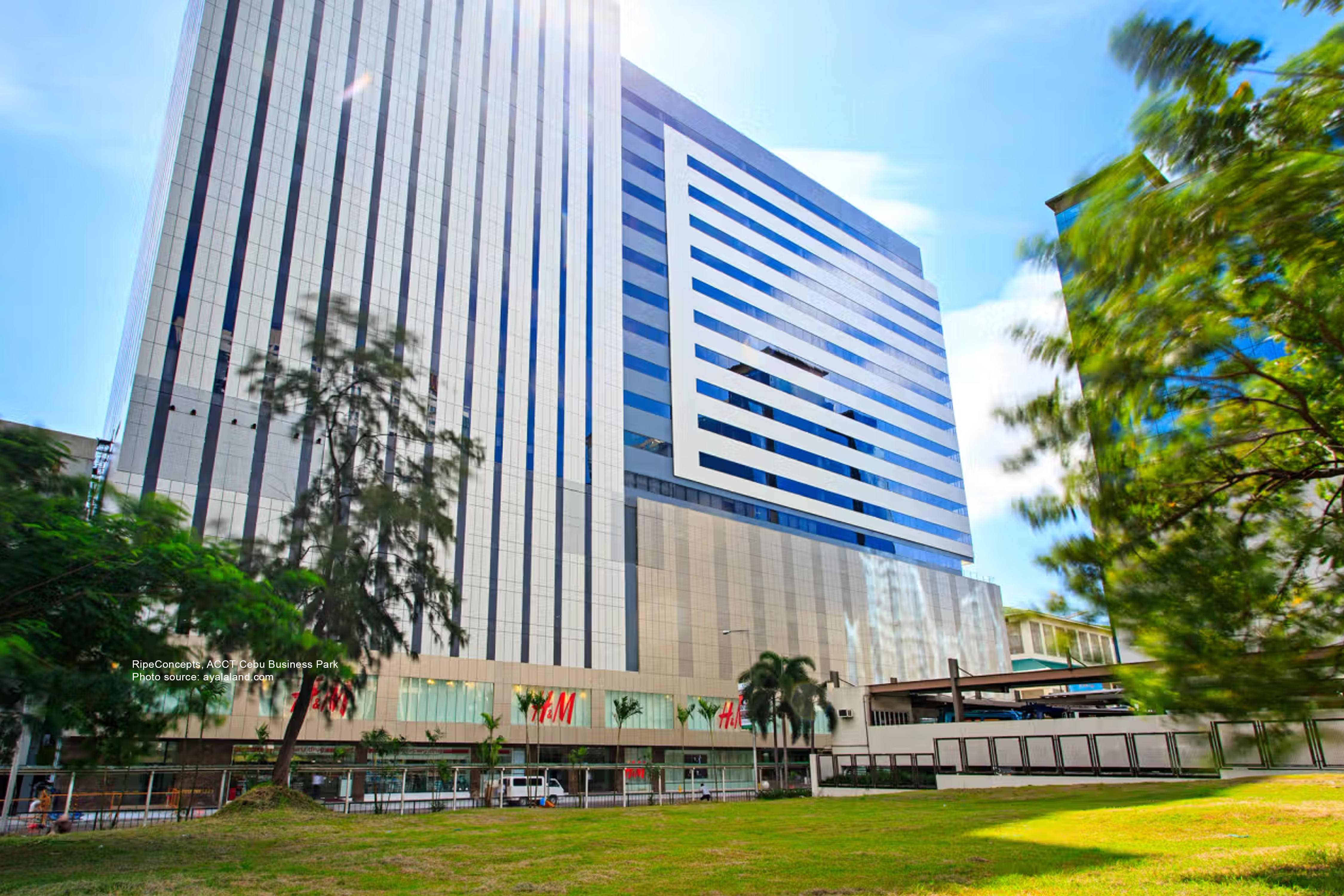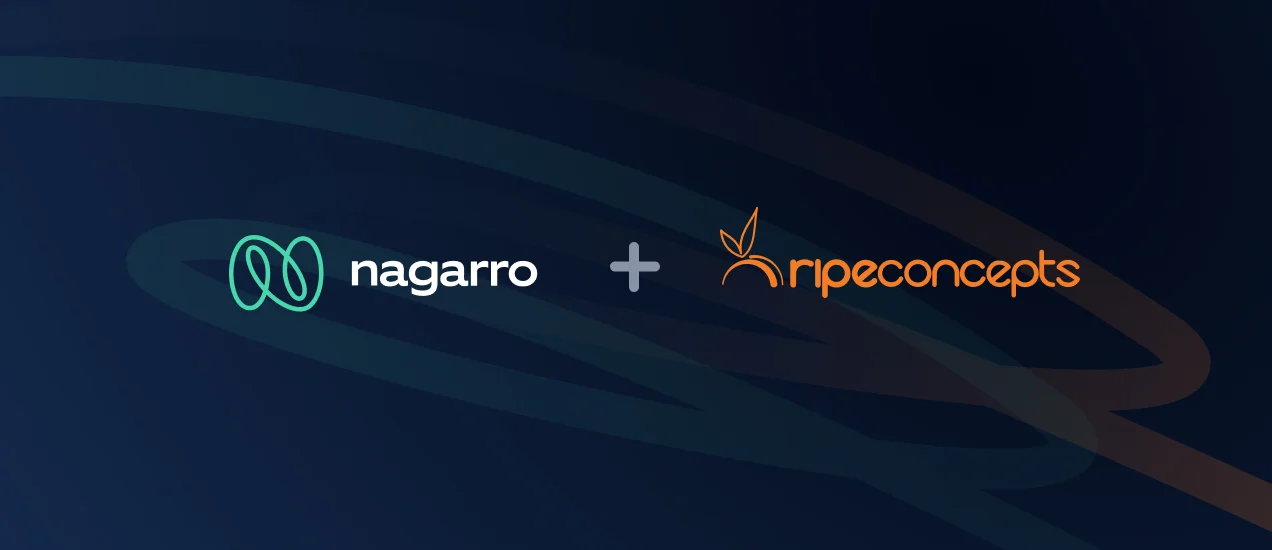As the digital twin market is forecasted to reach $183 Billion by 2030, businesses worldwide gather talents and resources to keep up with the ever-changing digital realm. In our case, we have applied our innovative knowledge in real life- and of course, the virtual realm.
We can define a digital twin as simply a digital copy of an asset, may it be a replica of a person, thing, or environment. Moreover, businesses from different industries have integrated this technology into their systems. Surely enough, RipeConcepts, a Nagarro company, has made its way toward the Metaverse by replicating a digital twin version of the Cebu Hive!
We have asked our Tech Team, John Jakosalem, Felix Alquizalas, and Arsenio Gracia, led by Seth Abangan, about their experience from planning to deployment.
1.) What are the tools used to create the digital twin?
We had a bunch of different tools at our disposal to create the digital twin, like SketchUp, Blender, 3ds Max, Audio2Face, MakeHuman, and Unreal Engine 5.1. My buddy Felix took charge of making the digital twin of the Cebu Hive using SketchUp, and he used the floor plan that was posted in the building. He even did the avatars and animations for Miles, Paul, and Manas - he's a talented dude! After that, I gave the models a little cleanup work in Max and Blender, and then we compiled everything in Unreal Engine 5.1. It was a lot of work, but it turned out pretty good if I do say so myself!
2.) What are your preparations when creating the virtual Cebu Hive?
It all started as a fun challenge from Dwynn and Seth, who suggested we use VR to go to the moon, but then it evolved into a legit concept to showcase our skills and creativity. The craziest part is that we didn't even know how to use half of the tools we used! But with Seth’s guidance, we put our noses to the grindstone and used our focus, commitment, and sheer will to make the impossible possible. It was a wild ride, but we're proud of what we accomplished.
3.) Did you encounter challenges or hurdles along the way, and how did you handle them?
Man, we've faced so many challenges in bringing this project to life. Programming was definitely the toughest nut to crack - even though Unreal had some sweet blueprints that made it a little easier, it was still challenging, especially if you're new to it all. Optimizing the meshes and figuring out how the whole program works as a unit? Phew, talk about a nightmare! We spent countless hours banging our heads against our desks, but we never gave up. Trial and error was our bread and butter, and every time we messed up, we learned from our mistakes and kept pushing forward.
4.) How did you feel after completing the digital twin?
Well, it was such a relief when we finally finished the project. Can you believe it? We managed to whip up an awesome VR experience in just a few weeks - a month, tops - and it was ready just in time for our guests. It felt like the greatest accomplishment ever. I mean, we honestly thought we couldn't pull off something like this. It just goes to show what you can achieve when you put your mind to it!
5.) Can you elaborate on the design and technical breakdowns?
What we did was create a digital version of our office from scratch using SketchUp. We used the actual layout and floor plan of the building to make it as accurate as possible. Then we brought everything into Unreal Engine and put it all together, even throwing in some free stuff like chairs to make it feel more realistic. The coolest part though, was using UE's Blueprint to make everything interactive and fun. We also used some fancy AI stuff to make the avatars look like they're talking and moving their lips in sync with the audio. There's a whole bunch of other tech and design work that went into this thing, but we'll get into all that later. Stay tuned, folks!
6.) How would you define the Metaverse?
So, the Metaverse is basically like a digital universe where you can hang out with other people in real-time, all within a virtual world. It's like an even cooler version of the internet, where you can do all kinds of stuff like play games, shop, or even socialize with friends. It's kind of like the ultimate version of a virtual reality world, where you can experience all kinds of different things. The term first showed up in a sci-fi book called "Snow Crash," but now it's being used to describe all kinds of digital spaces or 3D immersive worlds.
Truly, what a digital creative journey it was! This shows how dedication and innovation run through each of our colleagues from the Metaverse and beyond.

Metaverse



